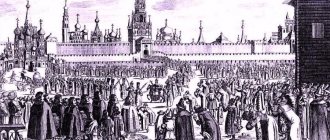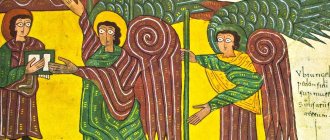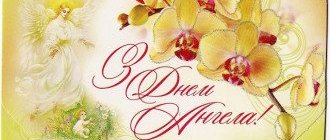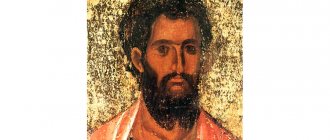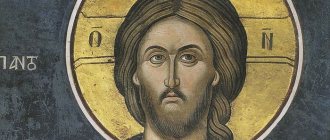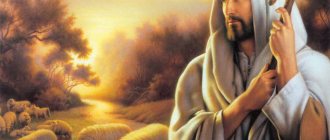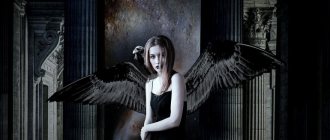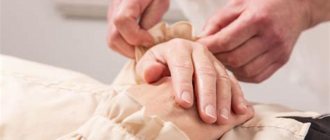The Savior always walked on foot, accompanied by his disciples. But at the end of His earthly life, the solemn entry of Jesus Christ into Jerusalem took place. This event combined two traditions: the triumphal procession and the transport of ordinary people. On the one hand, Jesus entered the city as a ruler, on the other, he demonstrated that He was the same person as his followers. He tells people not war and suffering, but salvation from grave sins and the joy of knowing the true God.
Prayers to God for help in life.
History of the holiday
The triumphal entry into Jerusalem has its own history. The tradition appeared back in the times of the Etruscans in the form of a rite of appearance in the capital of the Solar Deity. At that time he was personified by the king. He rode into the city in a chariot, accompanied by soldiers.
This is exactly how kings Pontius Pilate and Herod entered through the triumphal gates after their victories over their enemies. Four horses were harnessed to an elegant chariot, and the animals were decorated with blankets and other items. The Tsar rode through the arch of the triumphal gates to the cheers and shouts of the crowd.
Later, triumphal processions were enriched with other elements. The ruler's passage was accompanied by a military parade. The warriors carried their booty - the loot from their campaigns.
There are several versions depending on the animal's choice. In those days, in the Roman Empire, the pagans considered the donkey an unclean animal, even demonic. The ancient Egyptian god of destruction Typhon was depicted with the head of a donkey. The pagans in Rome expressed their attitude towards the first Christians with a picture where a layman bows before a crucified deity with a donkey's head.
The stubborn animal was treated completely differently in the east. The ancestor of Christ's earthly parents, King David, rode into Jerusalem on a donkey. According to legend, Jairus, the chief judge of Israel, himself rode a donkey, and all 30 of his sons also moved around the city and country on young donkeys.
The Virgin Mary, after giving birth to the baby Jesus, rode to Nazareth on a donkey. Her husband Joseph walked nearby. So they traveled for almost three years until they reached a place safe for Christ.
There was a custom in Israel. The main commander, usually the king, went to war on horseback. In the cities where he came in peace, he demonstrated this by riding through the gates on a donkey. Christ, by choosing an animal, showed that He is the Messiah, returning peace to people.
The triumphal entry into Jerusalem of the Lord Jesus Christ demonstrated that the welfare of ordinary people was most important to Him, and not the demonstration of His power and greatness.
Holiday in Orthodox worship
Christ's triumphal entry into Jerusalem took place a week before His death. When the Savior appeared in the city, the first thing he did was go to the Temple. There he overturned all the stalls of the traders and drove them out into the street. He announced that from that moment on His house would be called the House of Prayer.
The first mentions of the celebration of Christ's entry into Jerusalem appeared in descriptions of events of the 3rd century. Believers made a religious procession holding palm branches above their heads. The celebration continued for a whole week, until the day of the crucifixion and death of Jesus. These 7 days were called Week Viy - this is what palm trees were called in the local dialect.
Palm trees did not grow in Rus'. But it was precisely by this time that the buds on the willow blossomed. White and fluffy, they symbolized the beginning of a new life. They were taken as the basis for decorating those marching in the procession. This is how the local name for the ritual appeared - Palm Sunday.
In past centuries, the patriarch traditionally rode ahead of the column on a young white stallion - a symbol of a donkey. In the old days in Byzantium, the king himself led the animal by the bridle. This symbolized the primacy of the spiritual over worldly life.
This tradition has not taken root in Russia. Despite its power, the Church was always controlled by the king and helped strengthen state power. She also took upon herself the education and cultural development of parishioners.
The holiday of Jesus Christ’s entry into Jerusalem is inextricably linked with the miracle He performed - the resurrection of Lazarus, which further emphasizes the significance of the holiday. Christ came to testify to people that a person’s existence does not end with his death on earth. Jesus did not fight the pagan regime of the Romans. He demonstrated to the laity that Christianity is not violence, but free choice. God does not force anyone to believe in Himself. The soul itself comes out to worship with him and rejoices with joy at the meeting.
Entry into Jerusalem - Palm Sunday, marked the beginning of important events for religion - the beginning of Holy Week. These days, God fulfilled his promise to save the human race mired in sins. His son Jesus was captured by his enemies, condemned by infidels, and crucified. Christ died, descended into hell, brought the righteous out of it, and then rose again.
The earthly life of Jesus Christ.
Signs and beliefs
- If the weather is good on Palm Sunday, there will be a good harvest of fruit.
- In order for there to be prosperity and prosperity in the house, on this day it is necessary to plant or replant an indoor flower. If it grows well, then you should expect profit, and if it withers, prepare for losses.
- If a girl wants to get married in the next year, then she needs to break branches on a young willow before dawn, put them at the head of the bed and think about her loved one all day.
- Before committing an important task, you need to eat three willow buds stored on Palm Sunday. They can attract good luck.
- To get rid of a headache, you should comb your hair thoroughly, collect the hair from the comb, dip it in water and pour it at the roots of the willow.
Prayers
According to sacred manuscripts, it is known that four prayer texts were compiled for the consecration of the tree. The current Orthodox Church has accepted and used only one prayer: “Our Lord Christ of God, sit on the cherubim.” This text has been preserved in liturgical books as the only canonical one. But there is no prohibition on using other prayers.
Before reading the prayer, the church is fumigated with smoke from the branches. Upon completion, all those present are sprinkled with holy water, and first of all the willow branches that they hold in their hands.
Our Lord Christ of God, sit on the cherubim
The text of the prayer for the Entry of the Lord into Jerusalem was compiled separately. It recognizes Jesus Christ as the Son of God, equal to the Lord, and praises are sung to Him.
Prayer for the Entry of the Lord into Jerusalem
The troparion read during the liturgy, composed for the Entry of the Lord into Jerusalem, consists of three texts: Troparion, tone 1, Kontakion, tone 6 and Magnification.
Troparion for the Entry of the Lord into Jerusalem (Palm Sunday)
Akathist for the Entry of the Lord into Jerusalem (Palm Sunday)
The Prayer Book contains texts for reading during the liturgy and all-night vigil. The ceremony is performed in the temple by the clergy. Believers can join them in church or, with the permission and blessing of the priest, conduct all-night prayer at home. But such a ritual is not available to everyone. Only experienced Christians who know all the texts and have experience in conducting long prayer services can perform such a ritual.
Properties of consecrated willow
A consecrated willow becomes a shrine. She has miraculous powers throughout the year. The church recommends keeping it in the house near the icons until next Palm Sunday. This helps to attract health, prosperity, and good luck. You can also make healing infusions from it, perform rituals to protect against diseases, fires, and to attract health, strength, and well-being.
Rituals with blessed willow
- To cleanse from the evil eye and evil spirits, they lightly beat family members on the back with blessed willow twigs and at the same time say: “I don’t hit, it’s the willow that hits!” To attract strength, health and prosperity, they say when whipping: “Be as strong as the willow, as healthy as its roots, and as rich as the earth.” Whipping willow on domestic animals protects them from diseases.
- To protect the house from fire and lightning, several branches are burned and the ashes are stored.
- To attract health and strength, on Palm Sunday they bake bread with the blossoming buds of the blessed willow and eat it.
- Women who cannot get pregnant for a long time should swallow several willow buds.
- For insomnia, place a willow twig at the head of the bed and before going to bed say: “Holy angels, take care of my sleep, holy willow, drive away the undead.”
- To successfully resolve an important matter, they eat a willow bud and think about the matter.
- To become more self-confident, stick a blessed branch into the roof of the house or in the corner of the ceiling.
- To be strong and healthy, on Maundy Thursday (three days before Easter) before sunrise, a palm branch is brewed in boiling water and washed or rinsed with this decoction.
You cannot throw blessed twigs in the trash. This can lead to illness and money problems. Used or worn out willow can be:
- let the river flow;
- burn separately from garbage;
- bury in a clean place;
- put between the bushes of growing young willow;
- use to expel evil spirits and cleanse the house - set fire to a twig and walk around all corners of the room with it;
- give it to the nearest temple, where they will burn the willow with prayer.
Iconography
The first images of the Entry of the Lord into Jerusalem appeared on sarcophagi, and their date is determined as the beginning of the 4th century. The presentation of events on the icons differs. There are three main types of presentation of the picture of the entrance to the city gate.
Most often, Christ is depicted riding a donkey. His students follow him. Less often, on icons, next to the donkey carrying the Savior, a young white foal is depicted. Children run ahead of Jesus. As a greeting and congratulation, they lay clothes under the animal’s feet and throw branches that they pluck from the trees.
The apostles follow behind Jesus. In some icons, the disciples are followed by Christians who want to hear His sermon, women with children in their arms. Behind the procession you can see the city and church domes, often topped with crosses.
Among the icons there are compositions where, on either side of the Teacher riding on a donkey, two apostles follow: Peter and John.
In the 15th century, a new trend appeared in Russian iconography. His supporters depicted the Teacher riding a donkey backwards, facing his disciples and talking to them.
Holiday meal
During strict fasting, fish is not recommended for consumption. But Palm Week is an exception (there should be fish dishes on the table). These include various soups, fish pies, stuffed pike perch, baked catfish and mackerel. You can add other seafood. Not only seaweed and seaweed, but also shrimp, crabs, and squid.
It is the fish dishes on the table that distinguish the meal in honor of the Savior’s entry into Jerusalem.
What you can and cannot eat
Palm Sunday falls during the Great Forty Days of Lent before Easter. On this holiday, the Orthodox Church relaxes fasting. It is prohibited to eat meat, eggs, and dairy products, but it is allowed to eat fish.
Traditional holiday table treats include vegetable salads, stews with the addition of peas, beans, corn, beans, lentils, and porridge from a mixture of cereals. A popular product during fasting is mushrooms. Housewives make roasts, casseroles, pies, zrazy, soups, cabbage rolls from them. Mushrooms and legumes replace meat products. For dessert, housewives serve fruit, lean marshmallows, jam, marmalade, halva, dark chocolate, and cookies. Traditional drinks are jelly, compotes, and uzvars. On Palm Sunday it is allowed to consume red Cahors in small quantities.
